1. Kirk’s Middle Name Changes
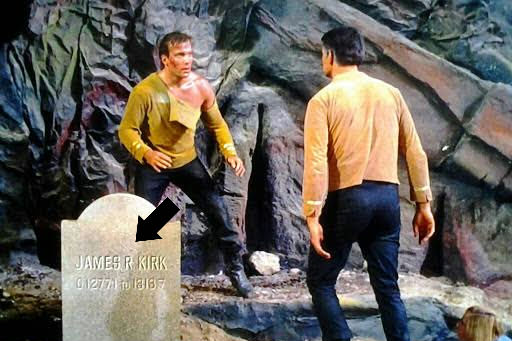
When Star Trek: The Original Series premiered in the 1960s, it brought bold ideas and unforgettable characters to television. But the show was filmed quickly, with small budgets and no thought of streaming-era scrutiny. That means continuity sometimes slipped through the cracks. Today, fans notice these quirks as much as the brilliance, and even cherish them as part of TOS’s charm.
In the second pilot, “Where No Man Has Gone Before” (1966), the gravestone for Captain Kirk clearly reads “James R. Kirk.” But by the time later canon settled, his full name became James Tiberius Kirk, with no trace of the mysterious “R.” The inconsistency was never addressed in the original series, and the production team simply moved forward as if it never happened. Fans have speculated endlessly about whether it was a production oversight, a mistake in carving the gravestone, or perhaps an in-universe clerical error. Whatever the case, the shift from “R” to “T” has become one of TOS’s most famous continuity slips.
2. Spock’s Emotions
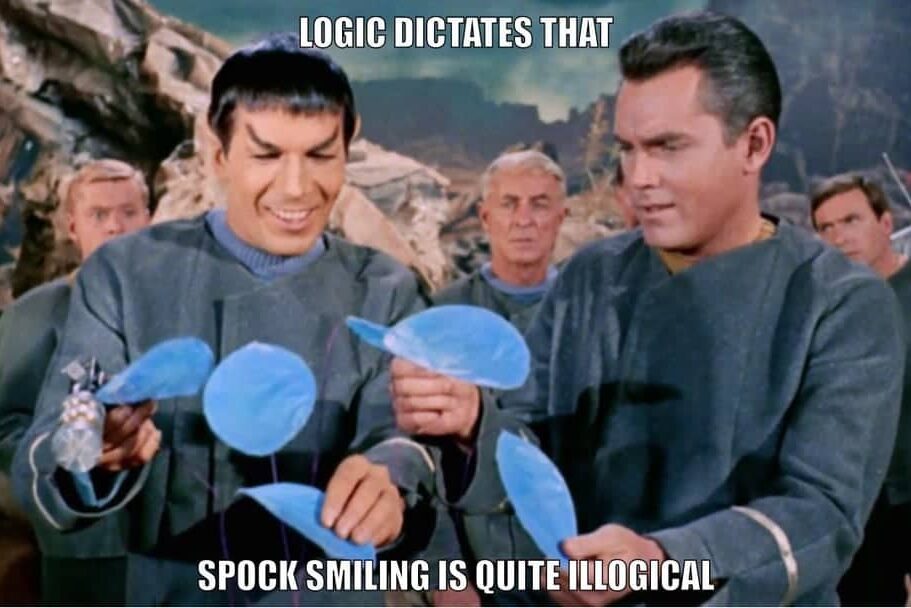
In “The Cage,” the first pilot filmed in 1964, Spock is surprisingly animated. He shouts, grins, and even lights up with excitement over strange alien plant life. In early aired episodes, his personality still veers toward emotional at times. But as the series progressed, Spock’s character became more tightly defined: logical, restrained, and governed by Vulcan discipline. While the evolution makes sense from a behind-the-scenes perspective, Leonard Nimoy and the writers were refining the role, it leaves the early episodes looking like Spock hadn’t yet mastered Vulcan control. For fans, spotting these moments of emotion adds an extra layer of charm to his development.
3. The Changing Klingons
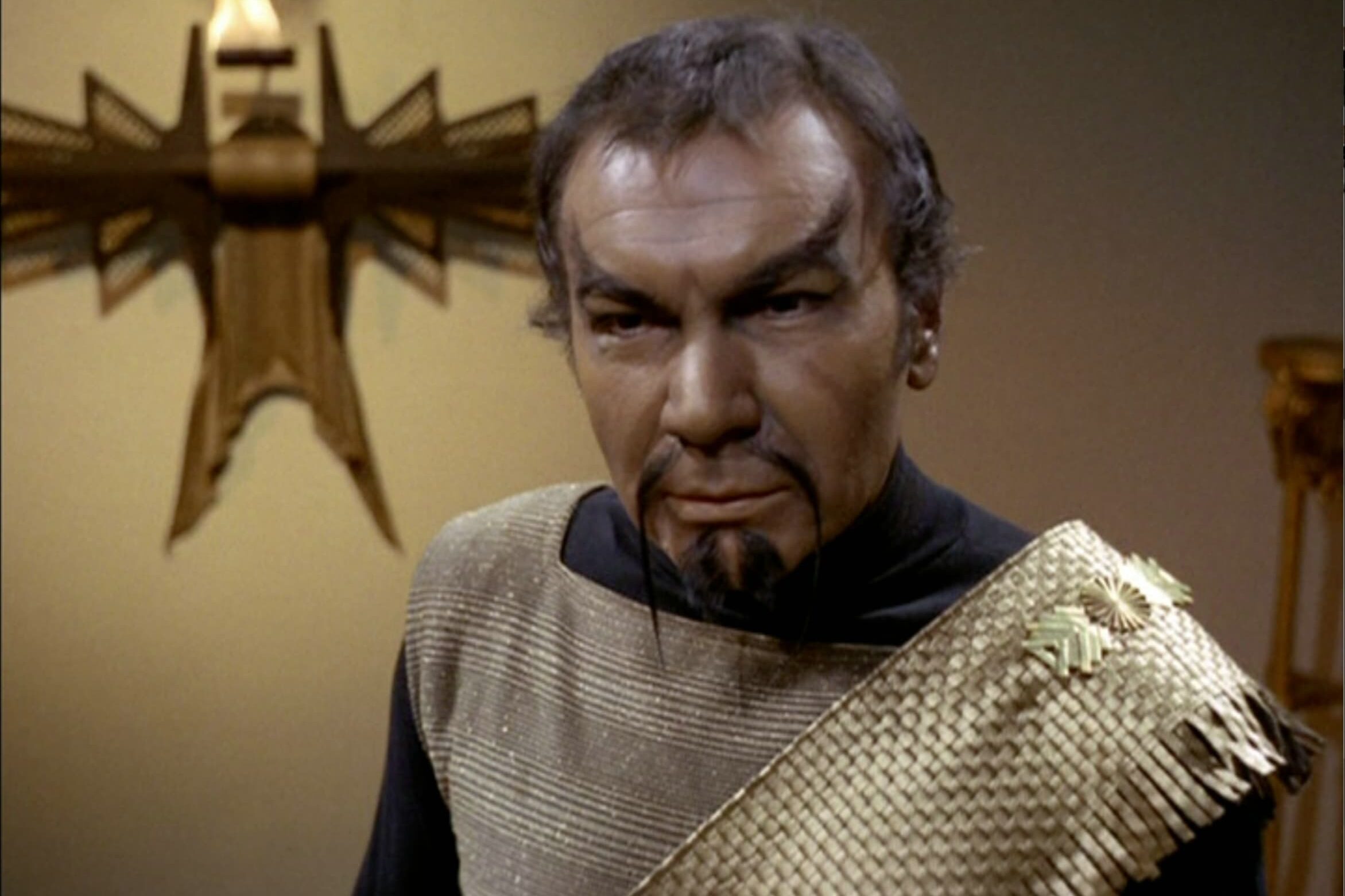
The first time Klingons appeared in “Errand of Mercy” (1967), they looked nearly human. Their darkened skin tones, mustaches, and goatees gave them a menacing air, but they lacked the forehead ridges that later became iconic. This visual shift wasn’t explained within TOS, leaving a glaring discrepancy when later Star Trek films and series introduced the now-familiar ridged look. For years, fans puzzled over the transformation until Star Trek: Enterprise offered an explanation involving genetic modifications and a viral outbreak. But during the original series’ run, the drastic difference was simply a matter of makeup budgets and design changes, which makes the Klingons’ evolving appearance one of Star Trek’s most memorable continuity quirks.
4. The Federation’s Money Problem
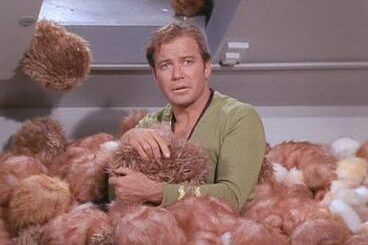
Does money exist in the Federation or not? TOS sometimes seemed unsure. In “The Trouble with Tribbles,” Uhura receives one as a gift from Cyrano Jones. The interstellar trader Cyrano Jones offers the Tribble to Uhura as she takes aboard goods for sale, establishing the creatures’ presence on the USS Enterprise. In other episodes, McCoy and other characters reference paying for drinks. Yet later canon firmly established that humanity in the 23rd and 24th centuries had moved beyond money, with people working to better themselves rather than for wealth. This contradiction has sparked decades of debates among fans and scholars alike. Some suggest that Federation citizens didn’t use money among themselves but still needed a form of currency when dealing with other species. Others chalk it up to the writers not having fully imagined Star Trek economics in the 1960s.
5. The Ever-Changing Stardates
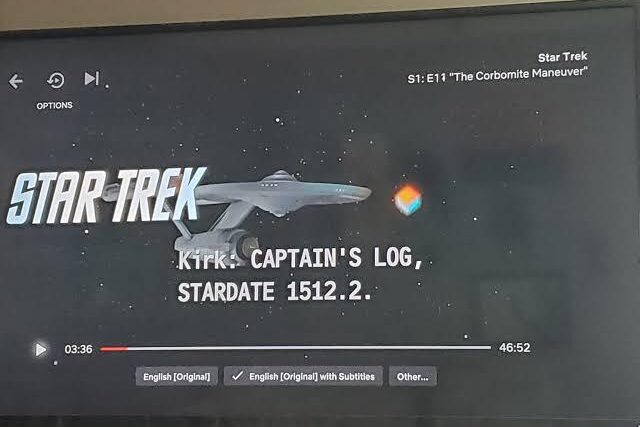
TOS introduced “stardates” as a futuristic way to mark time. However, the numbers rarely made sense in sequence. One episode might give a stardate of 1512, only for the very next story to jump to 3400, then back again. Gene Roddenberry later admitted that stardates were deliberately random in the early years, chosen to sound mysterious and advanced rather than to track a real calendar. While later series established a more consistent formula, TOS stardates remain one of the show’s most notorious inconsistencies. Fans who try to construct a precise timeline for the Enterprise’s five-year mission often run into these confusing jumps, but they’ve become part of the fun of dissecting the series.
6. Uniform Colors Don’t Match Ranks
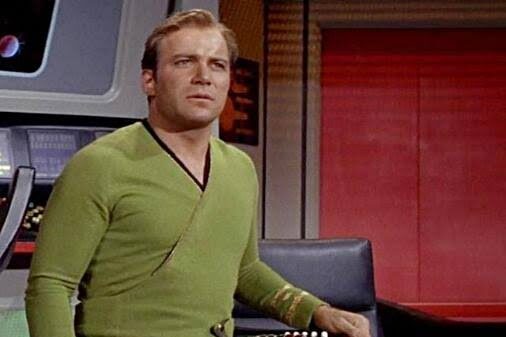
The iconic Starfleet color scheme, gold for command, blue for science and medical, and red for engineering and security, wasn’t always consistent in TOS. Captain Kirk often wore a green wraparound tunic that didn’t fit the gold standard, while extras were sometimes placed in colors that didn’t match their supposed roles. Lighting also affected how the “command gold” appeared, sometimes looking more green than yellow on screen. These shifts created moments where rank and department weren’t visually clear, confusing viewers who tried to track Starfleet hierarchy through uniform design. Later series standardized the colors, but in TOS the inconsistency stood out, leaving fans to explain it away as variations in Starfleet fashion.
7. The Mysterious Number of Enterprises
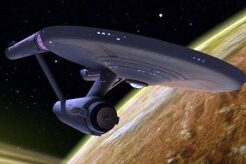
Throughout the series, Kirk alternates between describing the Enterprise as “the only ship of her kind” and mentioning her as part of a larger fleet of Constitution-class starships. In some episodes, he claims she is uniquely powerful or the flagship of Starfleet. In others, sister ships like the Defiant and Lexington are referenced, suggesting she is just one of many. This flip-flop caused confusion about whether the Enterprise was truly one-of-a-kind or part of a standardized fleet. Later lore clarified that she was one of twelve Constitution-class ships, but TOS never kept the message consistent, creating an ongoing debate among detail-oriented fans.
8. Transporter Rules
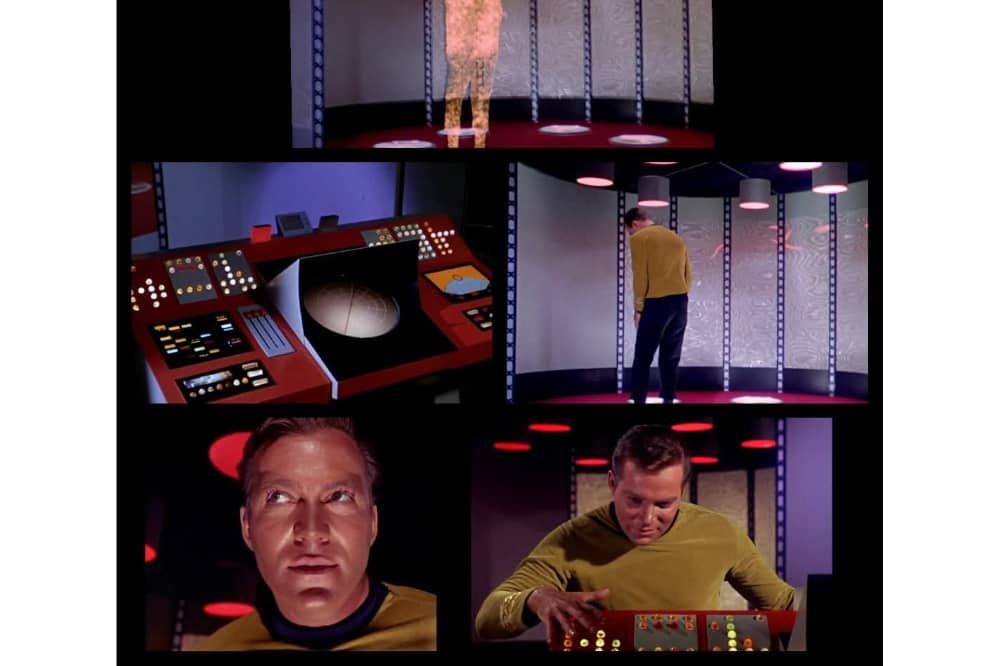
The transporter’s capabilities in TOS often depended more on the script than any technical logic. In some episodes, it could beam crew members through storms, across vast distances, or even out of hopeless situations. In others, the same obstacles suddenly became impossible, forcing the crew to find another solution. At times, the transporter was even portrayed as capable of resurrecting people, such as when Kirk was “lost” in “The Tholian Web.” In “The Enemy Within” the transporter malfunction splits Kirk into “good” and “evil” halves, yet in other episodes much simpler obstacles (like ion storms) render it unusable. In “Obsession,” the crew beams up over a large area to search for survivors, but in “The Doomsday Machine,” limited range and interference suddenly constrain them. These shifting rules made the transporter feel unreliable in-universe, though it was often more about what the day’s special effects and story required. Fans later joked that the transporter was less a piece of consistent technology and more a plot device with a control panel.
9. McCoy’s Daughter (or Not?)
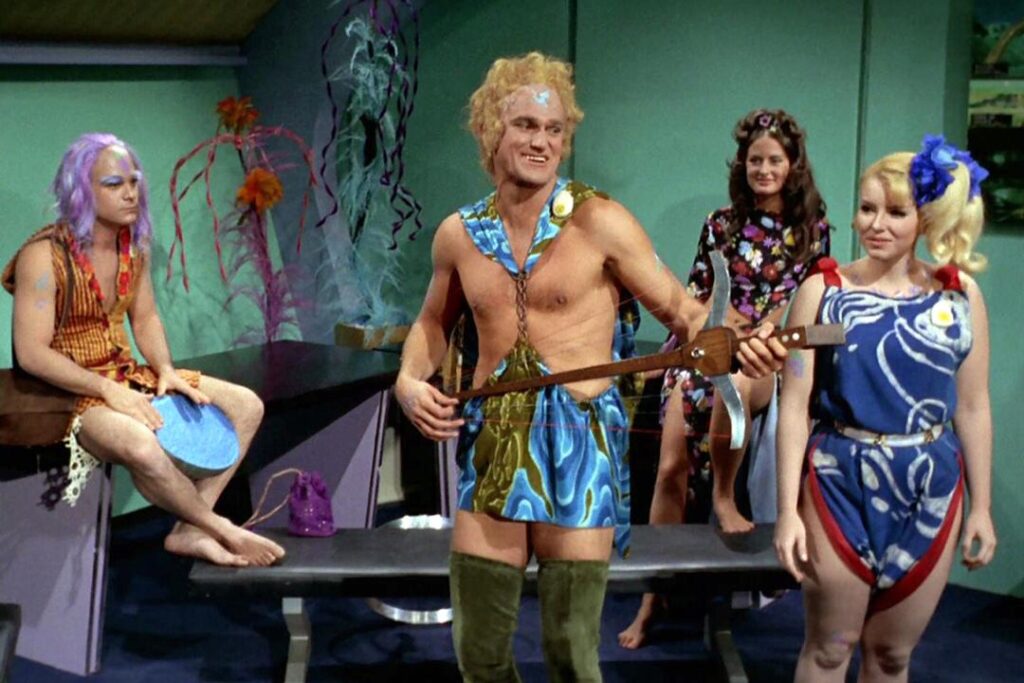
In “The Way to Eden” (1969), Dr. McCoy casually reveals that he has a daughter named Joanna. This detail seems like it would have major personal significance, yet Joanna is never shown and never mentioned again in TOS. Early script drafts had her appear as part of a subplot, but the idea was dropped before filming, leaving the single mention as her only canonical presence in the series. Expanded Star Trek novels and fan works picked up the character and gave her a fuller story, but on-screen in TOS she remains a dangling thread. The abrupt introduction and disappearance of Joanna highlight how character backstories were often sketched lightly in TOS, only to be fleshed out later.
10. Kirk’s Brother Sam
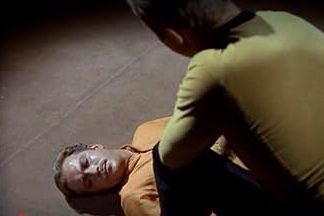
In the episode “Operation: Annihilate!” (1967), viewers meet Captain Kirk’s brother, George Samuel Kirk, played by William Shatner himself with a fake mustache. Sam is killed during the episode, leaving Kirk to grieve, but the character is never mentioned before and barely referenced afterward. Given the major role family often plays in character arcs, the absence of follow-up is striking. Later series made stronger use of family ties for characters, but in TOS, Sam felt like a quickly introduced plot device rather than a lasting piece of Kirk’s history. Fans today view it as a curious oversight, especially since Kirk is otherwise presented as a man deeply loyal to those he cares about.
11. Phaser Settings and Color Change Episode to Episode
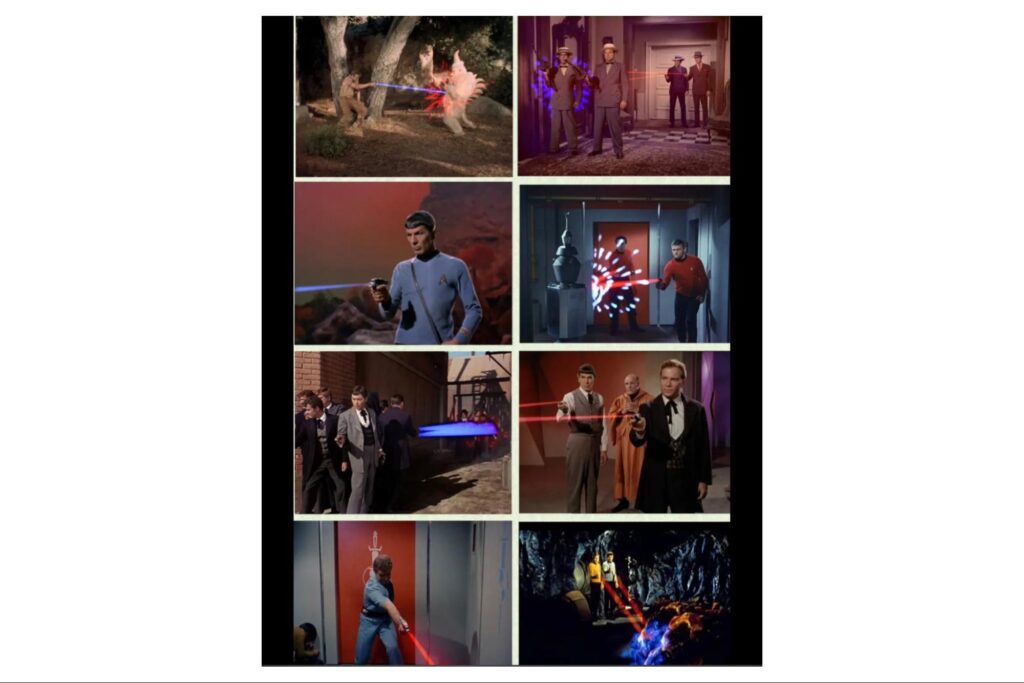
Phasers were supposed to be Starfleet’s reliable, multipurpose sidearms, but in TOS their effects changed dramatically from one episode to the next. Sometimes a phaser set to “stun” dropped enemies instantly, while in other cases it only seemed to weaken or daze them. On higher settings, phasers could vaporize a person completely in one episode, then merely leave scorch marks in another. Even environmental effects varied, walls would be blasted apart one week, while another week the same weapon barely dented solid rock. This inconsistency made phasers feel unpredictable, a problem for a supposedly standardized Starfleet weapon. Behind the scenes, the changes came from writers using the technology to fit the plot, but fans who rewatch closely often note just how unreliable phasers seemed.
12. Communicator vs. Intercom Confusion
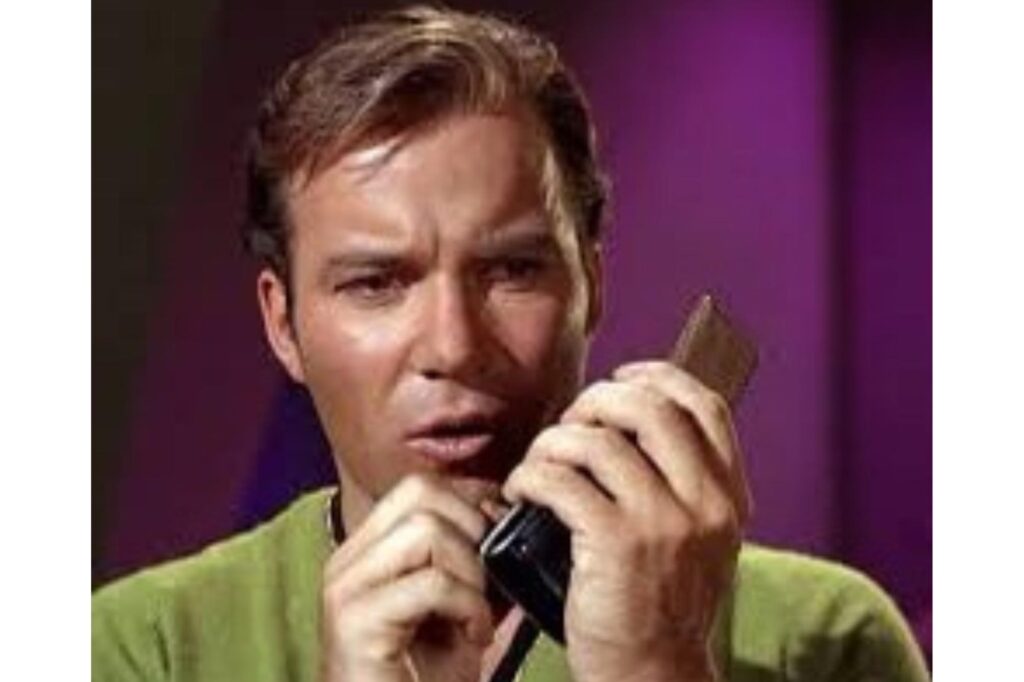
Starfleet communication devices weren’t always clearly defined in TOS. Sometimes Kirk flipped open his communicator to speak with the Enterprise, but in other scenes he seemed to talk into thin air and the ship responded. Onboard, he would sometimes use wall panels or consoles as if they worked the same way as the handheld communicator. The lack of consistency made it hard to tell what Starfleet’s communication system actually allowed. Later series clarified the difference between communicators, shipboard intercoms, and universal translators, but in TOS, the rules blurred from episode to episode. Fans often point to these moments as examples of the show still working out its futuristic technology.
13. The Vulcan Mind Meld Rules
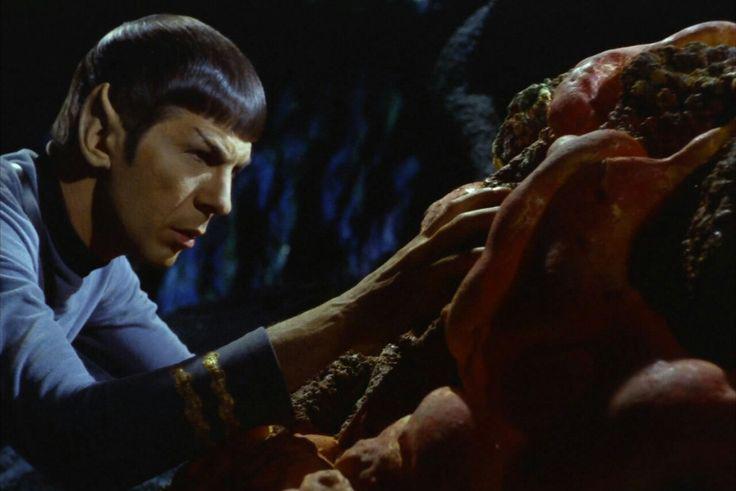
The Vulcan mind meld became one of Spock’s most recognizable abilities, but its use in TOS was uneven. In some episodes, it was described as rare, invasive, and even dangerous, a ritual that required deep trust. Yet in other stories, Spock casually performed a mind meld on strangers or even alien creatures he had just encountered. This raised questions about how uncommon or sacred the technique really was. For example, in “The Devil in the Dark,” Spock mind melds with the Horta without hesitation, while earlier episodes treat the practice as extraordinary. The inconsistency made it clear that the writers were using the mind meld as a storytelling tool, though fans later worked hard to explain the contradictions in Vulcan culture.
14. The Many Lives of Redshirts
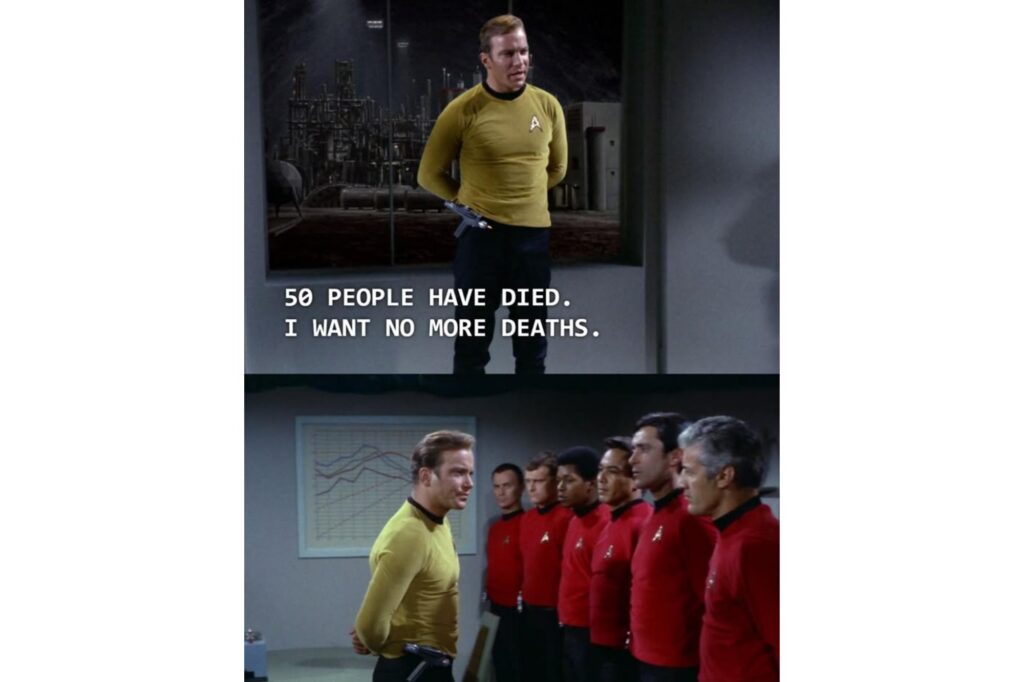
The “redshirt death” trope became a hallmark of TOS, with security officers in red uniforms frequently killed during away missions. However, careful viewers noticed that many of these background actors reappeared in later episodes, alive and well, sometimes even wearing the same uniform. Extras who were vaporized or mortally wounded would show up again as if nothing had happened, often without new names or ranks. This recycling was a practical decision by the production team working with limited budgets and a small pool of actors, but it creates a clear continuity problem. For fans, spotting these familiar faces has become a fun game, turning redshirt “immortality” into one of TOS’s most endearing quirks.
15. Sulu’s Job Description
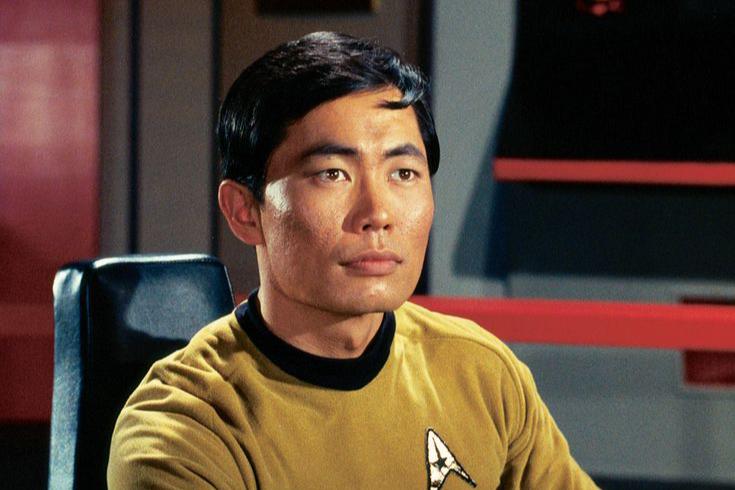
Hikaru Sulu is best remembered as the Enterprise’s skilled helmsman, but in early TOS episodes, his role was less defined. He first appeared in season one as head of the ship’s botany lab, tending plants and discussing science. Later, he moved to the helm, where he became Kirk’s trusted pilot, and occasionally he also handled weapons. The rapid shift in duties suggested that Sulu was Starfleet’s ultimate multitasker, capable of jumping between jobs at will. In reality, it reflected the writers’ evolving approach to the character as George Takei became a series regular. While later canon firmly established him as helmsman, Sulu’s job-switching in TOS remains a noticeable continuity oddity.
16. The Romulan / Vulcan Surprise
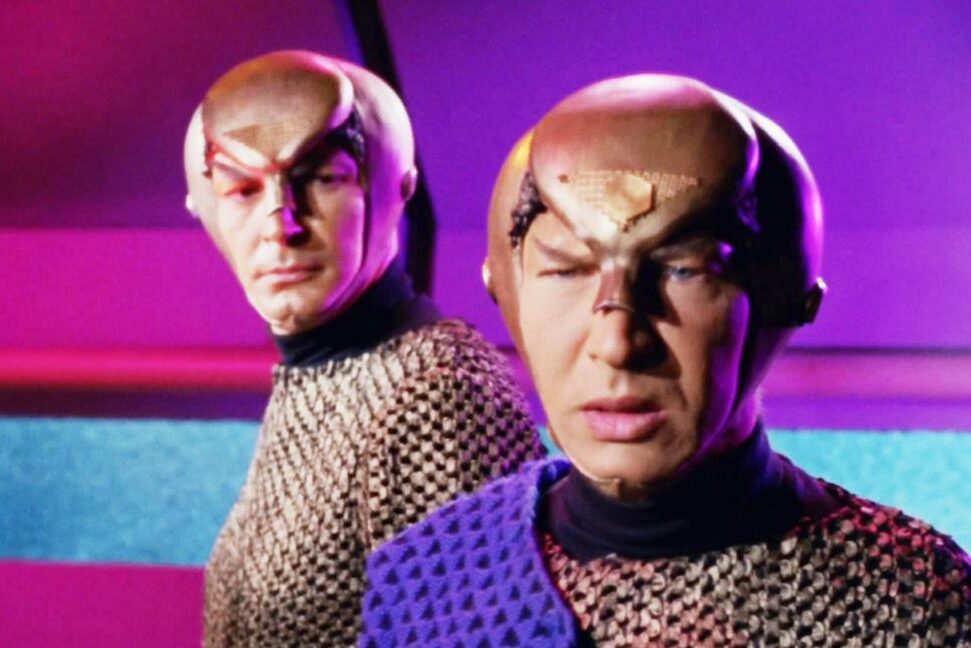
In “Balance of Terror” (1966), the crew is shocked to discover that Romulans look nearly identical to Vulcans. The resemblance creates suspicion toward Spock, who is suddenly treated with mistrust. But this reaction feels inconsistent, since Vulcans and Romulans share a common ancestry that Spock, as a Vulcan, should logically know. Later series filled in this historical detail, but in TOS, the dramatic reveal was written more for suspense than continuity. The result is a scene that plays well in the moment but leaves fans puzzled about why the similarity came as such a surprise to Starfleet officers.
17. Ship Damage and Repairs
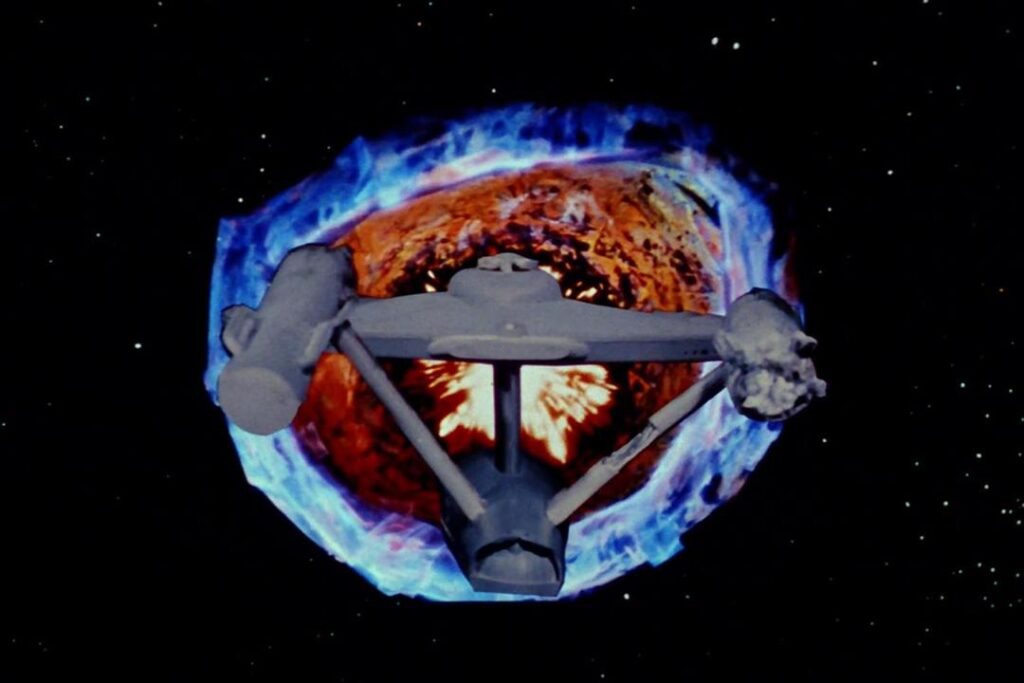
Throughout TOS, the Enterprise suffers heavy damage during battles and crises. Whole decks are reported destroyed, systems crippled, and the crew pushed to the brink. Yet in the very next episode, the ship is fully restored with no mention of repairs or downtime. For example, after “The Doomsday Machine,” where the Enterprise is battered nearly beyond function, she’s pristine in the following story. The lack of continuity in ship condition highlights how the series functioned as largely episodic television, where every new week reset the stage. Fans have tried to explain it as Starfleet’s unmatched efficiency, but in practice, it was simply production convenience.
18. Kirk’s Ever-Changing Rank
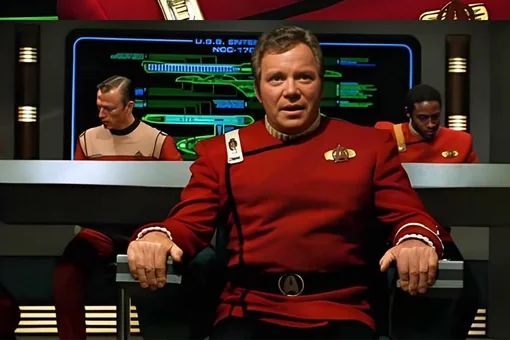
Kirk’s career path isn’t always consistent in TOS. In flashbacks and anecdotes, he is sometimes described as being a captain unusually young, while in other references he is said to have served as a lieutenant before commanding the Enterprise. To complicate matters further, certain characters even mistakenly address him as “Commodore.” These contradictions make it hard to pin down exactly how and when Kirk advanced through Starfleet’s ranks. While later expanded lore smoothed out the timeline, within TOS itself the rank shifts remain a noticeable continuity gap. For viewers, it underscores how the writers weren’t focused on strict military accuracy, but rather on creating the aura of a heroic starship captain.
19. McCoy’s Age
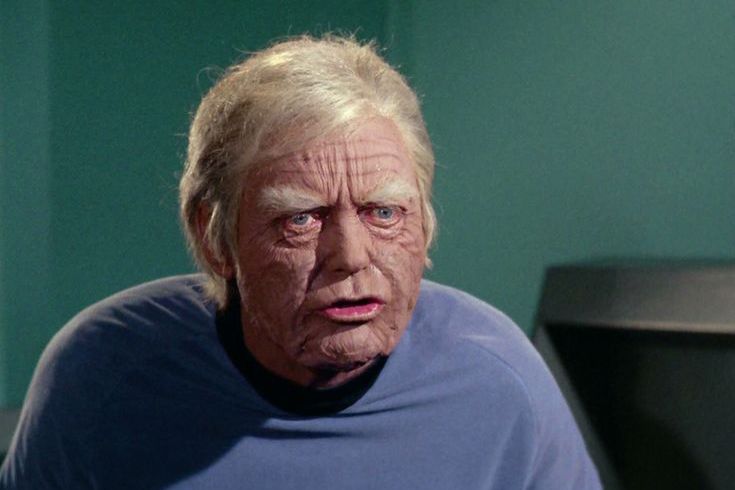
In “The Deadly Years” (1967), when the crew experiences rapid aging, Dr. McCoy’s age is stated as 137, an oddly high number given his background and later appearances. Dialogue elsewhere suggests a much younger timeline, especially considering his career and his daughter’s existence. When McCoy appears in Star Trek: The Next Generation nearly a century later, the numbers don’t match up, creating one of the franchise’s most glaring personal contradictions. Fans generally treat the 137 figure as a script slip or exaggeration rather than a fixed fact, but it remains a curious detail that doesn’t fit with the rest of his story.
20. Chekov’s Mysterious Arrival
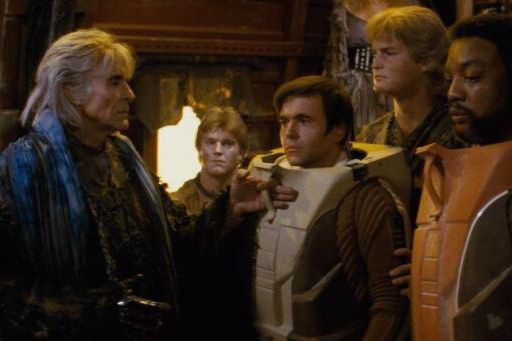
Ensign Pavel Chekov joined the Enterprise crew in season two, but his presence was retroactively implied in later canon. The most famous example comes from Star Trek II: The Wrath of Khan (1982), where Khan instantly recognizes Chekov from “Space Seed,” a season one episode in which the character never appeared. Walter Koenig himself joked that Chekov must have been in the bathroom during Khan’s original encounter. The slip created a beloved fan puzzle: how could Khan remember someone who wasn’t there? For many Trekkies, the error has become a running inside joke, symbolizing the playful inconsistencies that come with long-running stories.
21. The Size of the Crew
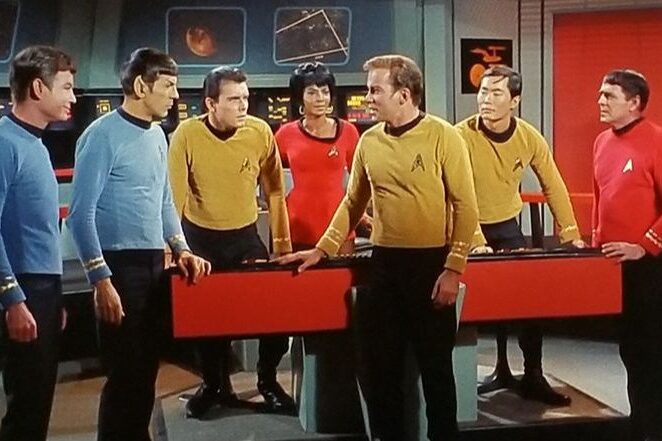
TOS gives conflicting numbers about how many people serve aboard the Enterprise. In some episodes, Kirk mentions about 200 crew members, while in others the number is closer to 430. For a ship that is supposedly the flagship of Starfleet, the difference is significant. The inconsistency likely came from writers not checking earlier scripts or adjusting figures to suit each story’s needs. Later technical manuals and reference guides settled the crew complement around 430, but the original series left viewers guessing about how many people actually called the Enterprise home.
22. Shifting Phaser Types
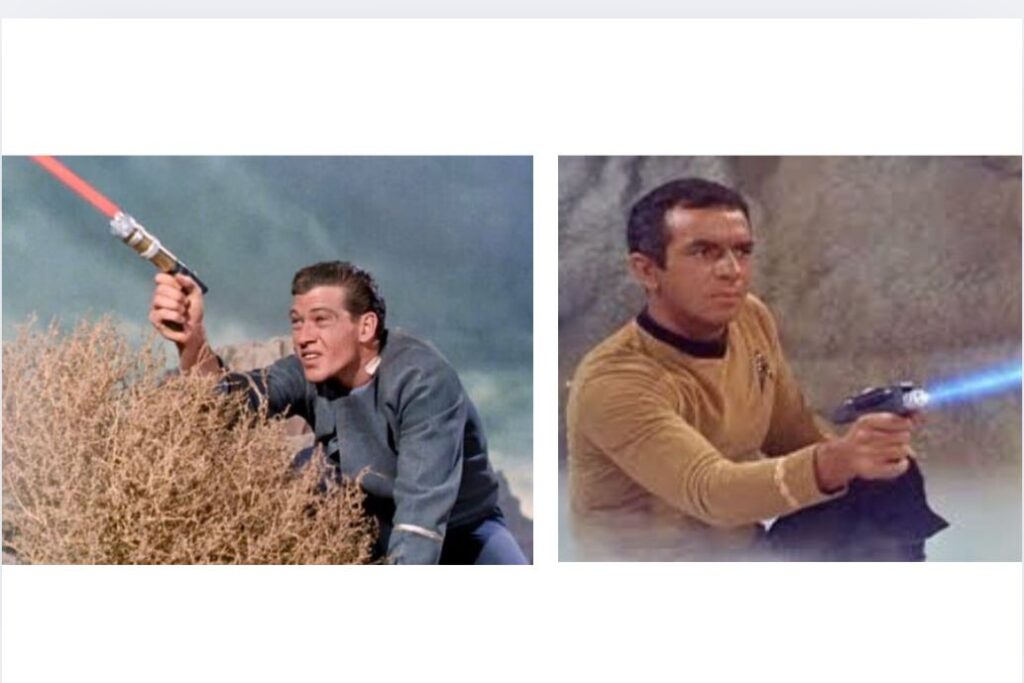
The look of the phasers also changed over time. In early episodes, characters carried bulky, pistol-style phasers. Later, sleeker, hand-held models appeared, often seen attached to belt holsters. Occasionally, the older design reappeared, creating the impression that Starfleet’s standard weapon kept changing back and forth without explanation. In reality, the prop department was refining the design as the show developed, but within the story it made Starfleet’s armory look strangely inconsistent. Fans have often noticed these shifts, joking that the Enterprise must have been constantly testing prototypes during its missions.
23. The Ever-Vanishing Shuttlecraft
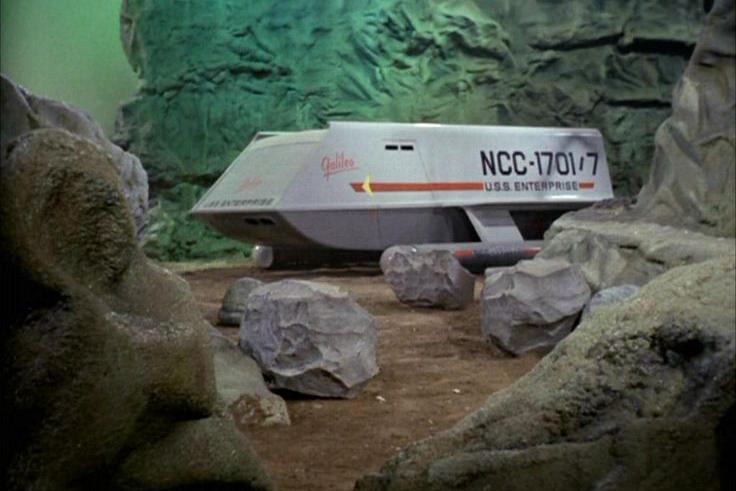
In the earliest episodes, Kirk laments the lack of small craft for planetary landings, suggesting the Enterprise only has transporters for away missions. Yet by mid-series, shuttlecraft like the Galileo appear and quickly become central to several stories. The sudden introduction of these vehicles, without any explanation for their absence earlier, creates a noticeable continuity gap. The behind-the-scenes reason is simple: the production team couldn’t afford a shuttlecraft set until later in the series. Still, for viewers trying to follow the in-universe logic, the sudden arrival of the shuttle fleet feels like technology appearing out of thin air.
24. The Speed of Warp
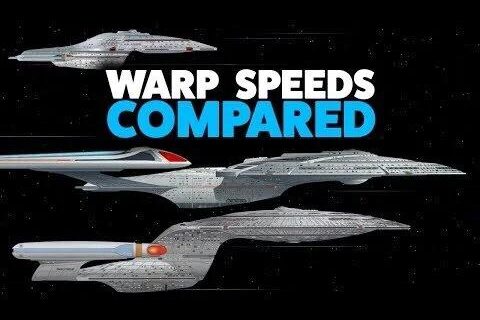
Warp speed in TOS is one of the show’s most notorious inconsistencies. In some episodes, Warp 8 is considered dangerously fast and potentially destructive to the engines. In others, the Enterprise pushes beyond Warp 9 with little issue. The meaning of each warp factor shifts depending on what the plot requires, making it impossible to pin down a consistent speed scale. Later Star Trek series introduced a standardized warp system, with Warp 10 treated as an unattainable limit. But in TOS, warp numbers functioned more like dramatic shorthand, leaving fans puzzled about how fast the Enterprise was really traveling.
25. Spock’s Family History
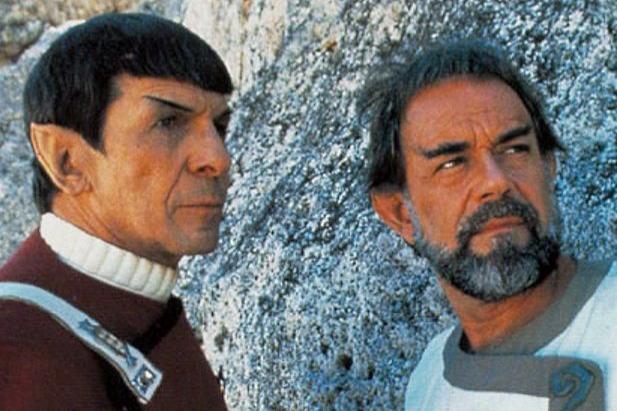
In “The Naked Time” (1966), Spock refers to himself as an “only child,” but later episodes and films reveal an entirely different story. We meet his father, Ambassador Sarek, and his human mother Amanda. Later, Star Trek V introduces his half-brother Sybok. The contradiction between Spock’s early statement and his expanded family history has sparked much fan debate. Some suggest Spock may have meant he had no siblings he acknowledged, while others see it as an oversight by early writers who hadn’t yet developed his backstory. Either way, the inconsistency highlights how Spock’s character continued to evolve long after TOS ended.
This story 25 Continuity Errors in Star Trek: The Original Series That Fans Love to Pretend Aren’t There was first published on Daily FETCH


